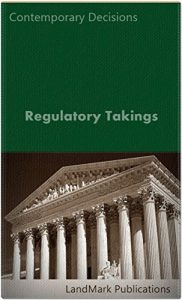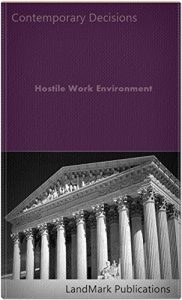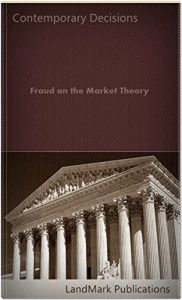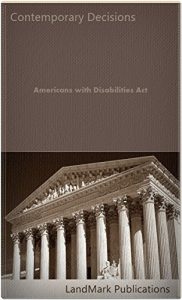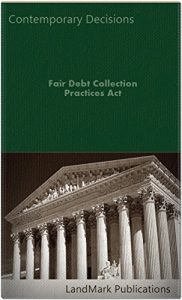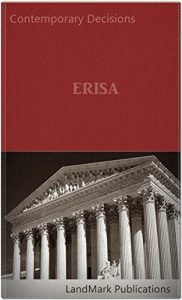THIS CASEBOOK contains a selection of 31 U. S. Court of Appeals decisions that analyze and discuss alleged regulatory takings under the Fifth Amendment Takings Clause. The selection of decisions spans from 2007 to the date of publication.
The Supreme Court has recognized two branches of Takings Clause cases: physical takings and regulatory takings. See Tahoe-Sierra Pres. Council, Inc. v. Tahoe Reg'l Planning Agency, 535 U.S. 302, 322, 122 S.Ct. 1465, 152 L.Ed.2d 517 (2002). A physical taking occurs when there is either a condemnation or a physical appropriation of property. Id. A regulatory taking, by contrast, occurs where even absent a direct physical appropriation, governmental regulation of private property "goes too far" and is "tantamount to a direct appropriation or ouster." Lingle v. Chevron U.S.A. Inc., 544 U.S. 528, 537, 125 S.Ct. 2074, 161 L.Ed.2d 876 (2005) (quoting Pa. Coal Co. v. Mahon, 260 U.S. 393, 415, 43 S.Ct. 158, 67 L.Ed. 322 (1922) (Holmes, J.)). 1256 Hertel Ave. Associates, LLC v. Calloway, 761 F. 3d 252 (2nd Cir. 2014).
Government action that does not directly appropriate or invade, physically destroy, or oust an owner from property but is overly burdensome may be a regulatory taking. "The general rule at least is that while property may be regulated to a certain extent, if regulation goes too far it will be recognized as a taking." Penn. Coal Co. v. Mahon, 260 U.S. 393, 415, 43 S.Ct. 158, 67 L.Ed. 322 (1922); see also Lingle, 544 U.S. at 537, 125 S.Ct. 2074 (regulation is a taking if it is "so onerous that its effect is tantamount to a direct appropriation or ouster"). A & D Auto Sales, Inc. v. US, 748 F. 3d 1142 (Fed. Cir. 2014).
The Supreme Court has treated certain regulatory actions as "categorical" takings. A categorical taking occurs where regulations "compel the property owner to suffer a physical invasion of his property" or "prohibit all economically beneficial or productive use." Lucas v. S.C. Coastal Council, 505 U.S. 1003, 1015, 112 S.Ct. 2886, 120 L.Ed.2d 798 (1992) (internal quotation marks omitted). Beyond those categories, the Supreme Court has "generally eschewed any set formula, instead preferring to engage in essentially ad hoc, factual inquiries." Id. (internal quotation marks omitted). But three factors have "particular significance" in the analysis: (1) "the character of the governmental action," (2) "the extent to which the [action] has interfered with distinct investment-backed expectations," and (3) "[t]he economic impact of the regulation on the claimant." Penn. Cent. Transp. Co. v. City of New York, 438 U.S. 104, 124, 98 S.Ct. 2646, 57 L.Ed.2d 631 (1978). And of course, "the existence of a valid property interest is necessary in all takings claims." Wyatt v. United States, 271 F.3d 1090, 1097 (Fed.Cir.2001). A & D Auto Sales, Inc. v. US, ibid.
Since Penn. Coal Co. v. Mahon, the Supreme Court has identified three "relatively narrow categories" of regulations which work a categorical, or per se, taking. Each category has a paradigmatic or representative case.
. . .
The Supreme Court has recognized two branches of Takings Clause cases: physical takings and regulatory takings. See Tahoe-Sierra Pres. Council, Inc. v. Tahoe Reg'l Planning Agency, 535 U.S. 302, 322, 122 S.Ct. 1465, 152 L.Ed.2d 517 (2002). A physical taking occurs when there is either a condemnation or a physical appropriation of property. Id. A regulatory taking, by contrast, occurs where even absent a direct physical appropriation, governmental regulation of private property "goes too far" and is "tantamount to a direct appropriation or ouster." Lingle v. Chevron U.S.A. Inc., 544 U.S. 528, 537, 125 S.Ct. 2074, 161 L.Ed.2d 876 (2005) (quoting Pa. Coal Co. v. Mahon, 260 U.S. 393, 415, 43 S.Ct. 158, 67 L.Ed. 322 (1922) (Holmes, J.)). 1256 Hertel Ave. Associates, LLC v. Calloway, 761 F. 3d 252 (2nd Cir. 2014).
Government action that does not directly appropriate or invade, physically destroy, or oust an owner from property but is overly burdensome may be a regulatory taking. "The general rule at least is that while property may be regulated to a certain extent, if regulation goes too far it will be recognized as a taking." Penn. Coal Co. v. Mahon, 260 U.S. 393, 415, 43 S.Ct. 158, 67 L.Ed. 322 (1922); see also Lingle, 544 U.S. at 537, 125 S.Ct. 2074 (regulation is a taking if it is "so onerous that its effect is tantamount to a direct appropriation or ouster"). A & D Auto Sales, Inc. v. US, 748 F. 3d 1142 (Fed. Cir. 2014).
The Supreme Court has treated certain regulatory actions as "categorical" takings. A categorical taking occurs where regulations "compel the property owner to suffer a physical invasion of his property" or "prohibit all economically beneficial or productive use." Lucas v. S.C. Coastal Council, 505 U.S. 1003, 1015, 112 S.Ct. 2886, 120 L.Ed.2d 798 (1992) (internal quotation marks omitted). Beyond those categories, the Supreme Court has "generally eschewed any set formula, instead preferring to engage in essentially ad hoc, factual inquiries." Id. (internal quotation marks omitted). But three factors have "particular significance" in the analysis: (1) "the character of the governmental action," (2) "the extent to which the [action] has interfered with distinct investment-backed expectations," and (3) "[t]he economic impact of the regulation on the claimant." Penn. Cent. Transp. Co. v. City of New York, 438 U.S. 104, 124, 98 S.Ct. 2646, 57 L.Ed.2d 631 (1978). And of course, "the existence of a valid property interest is necessary in all takings claims." Wyatt v. United States, 271 F.3d 1090, 1097 (Fed.Cir.2001). A & D Auto Sales, Inc. v. US, ibid.
Since Penn. Coal Co. v. Mahon, the Supreme Court has identified three "relatively narrow categories" of regulations which work a categorical, or per se, taking. Each category has a paradigmatic or representative case.
. . .
